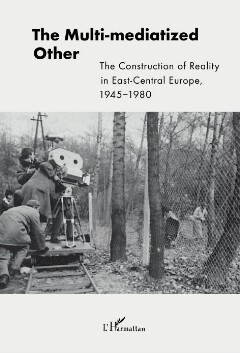

OCR
Within and Across the Media Borders release as information. Images circulated through the same communication channels and took the same position as the media content in the past. Giddens stressed the point that "most of the media preserve a sense of ‘privileged place’ in respect of their own position—giving a bias towards local news—but only against the backcloth of the pre-eminence of the event” (Ibid.: 27). In this way media communication channels emerged as a kind of a “third space”, transmitting information and content across a long distance. In words of Giddens, visual representations presented by television and cinema and present on video transmissions undoubtedly create a dimension of mediated experience that is unreachable by the printed word. However, print media are as much an expression of what tool disembedding and globalizing trends have done, which is expressed by modernity (Ibid.: 27). Photography—as part of an album collection, private or public, or printed in journals, in movies, and on television or on a poster, and original version can be regarded as representing two parallel processes of modernity—disembedding and globalization. Fluent Identity and Relatedness: Reality as a Series of Images The last topic I would like to emphasize is a matter of relatedness—that is, changing identity in relation to the Other. I would argue that this subject concerns not only the discussed caricatures, in which the focus on the othering people is particularly evident but also other visual images like photographs and films. Identities are not constant and although they are ascribed specific values, symbols, and attitudes, they form continuous constructs. As our main interest is in the depiction of the Other, we pay great attention to the way in which differences are presented, since indicating a discrepancy between “us” and “them” is a main way of representing otherness. An overview of the most common strategies of presenting difference shows that it is usually done in two ways—with positive auto-presentations and with negative presentations of Others. The concepts of pointing out difference are present in the book media’s style, rhetoric, and narratives. They all serve to achieve particular aims. One of the aims is othering, which is still a way of preserving one’s own identity. Careful analysis of the various processes of othering by media presented in the volume allows the reader to grasp differences between various media technologies and their role in shaping alterity. Our particular goal was to indicate that the process of othering is a consequence of a certain relation. It is, on the one hand, a way of establishing relations with others who can become the Other. Although relations are between people, they are also seen in visual representations, not only their outcomes, but also the processes of fixing, negotiating, changing the relations. On the other hand, relations can be seen between media and particular representations. The world we wanted to present in this volume belongs to the past, but it left various, complex mutually related visual representations of the Other. Through those representations, taking 21
Szerkezeti
Custom
Image Metadata
- Kép szélessége
- 1890 px
- Kép magassága
- 2776 px
- Képfelbontás
- 300 px/inch
- Kép eredeti mérete
- 1.18 MB
- Permalinkből jpg
- 022_000057/0022.jpg
- Permalinkből OCR
- 022_000057/0022.ocr
Bejelentkezés
Magyarhu
